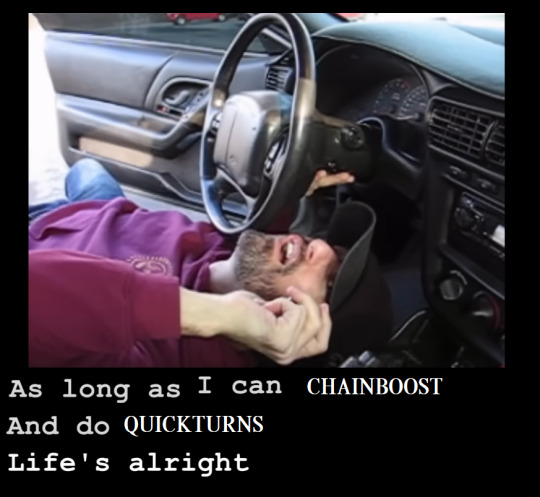One of my favorite mecha writers, Osaka, wrote a post recently.
I love pilots don’t get me wrong but the real sauce to a good mecha story is to tell a story where you couldn’t substitute the robot with something else like a dragon in a fantasy story or a fighter jet in a modern war story.
I think this is what bothers me about other mecha games, and I think this is what’s been missing from Full Metal Bones. The mechs feel like any other avatar-extension of the self. They have fantastic weapons and abilities, but there’s no real sense of scale to put them in perspective. Even if they have heat-building reactors, swappable armaments, and modular systems, they still feel like any other character in an RPG.
The way to fight that is by reorienting the paradigm. I’m not interested in location, I’m interested in velocity. I’m interested in energy and heat management. I need to know whether an enemy has me in a target lock. How many missiles do I have with me for this sortie? What’s my ammo count? And most importantly, I’m interested in weapons and firing them and the feeling of burying a pile bunker fist-deep in a grunt. These are the mechanics that should be happening every single turn in combat.
Velocity
Speed is defense. The faster you’re moving, the harder it is for an autocannon emplacement to hit you. You can outrun those missiles. This concept applies to enemy mechs too: the faster they’re moving, the harder it is for you to hit them. Chasing them in a dogfight decreases the relative speed difference, allowing you to attack. A faster cruising speed is a defensive posture and generally makes it harder to be hit, but changes in acceleration are more difficult.
I’m picturing something like a “Speed Phase” where the player manages their velocity measured in whole-number gear shifts. The mech’s gear would correlate to a balance between energy per speed and acceleration. Lower gears give you more acceleration at the cost of generally lower speed, and needing more energy to maintain. Higher gears give you much faster cruising speed at lower energy costs, but quick changes in direction are harder. Practically speaking I think this results in a bunch of different tables based on parts.

(image from another Osaka post)
Energy & Heat
Speaking of energy, I want to keep some of the original themes I had regarding SIN engines and keeping reactors that run hot to be more efficient. The mechanics of rolling for tension and spending those on abilities — those are still trapped in old paradigms about doing “moves” on your turn. Energy & Heat are still resources for the new paradigm, but we’re doing different things with them. After the speed phase comes the “Engine Phase” where these resources are updated.
Energy is the resource for mass production units. A certain amount of energy is generated reliably per turn, potentially with situational increases, such as whether or not a mech is on the ground or in the air. Support mechs can increase the energy efficiency of other mechs in the squad or outright provide battery injections for bursts of activity (though this will likely require them both to cease movement).
Heat is the resource for Daemons. The general premise is that it works like the inverse of energy: you start with an empty bar and work to prevent it from filling up completely. I’m a little fuzzy on the details of what exactly is generating the heat, but here’s how I think it’s going to work: The reactor tank starts out empty with a negligible amount of heat being generated. Activating SIN rods cause a large amount of heat each to be generated on a turn-by-turn basis. The trick is that players need to “use up” that heat by activating abilities/weapons/systems so that they don’t overheat. Once active, SIN rods can’t be deactivated, so if the player decides they need less heat generation (or the battle is over), they must be ejected from the mech completely — and you can only carry a certain amount.
Radar
The “Radar” phase probably happens earlier in the turn order, but I’ve primarily been thinking about it as a precursor to “Weapons”. It’s a double-edged phase: we need to know who is targeting you and who you can target. If an enemy has a target lock on you, you can burst your thrusters to break the lock. I think this process should potentially be more complicated; perhaps there are variable “strengths” of target lock requiring more drastic bursts or changes in direction.
Acquiring your own target lock on an enemy also requires you to manage relative velocity for an amount of time. I want to avoid making positioning a stat, which is typically how fire control systems work (functioning better within certain ranges). The benefit of a better FCS is also usually time-to-lock, but I’m not sure if that will reflect well with these combat turns. I might introduce a separate time-tracking mechanic in the style of a Forged In The Dark clock for FCS management. A small amount of randomness coupled with the specific FCS and relative velocity determines how quickly you can acquire a target lock. Some sort of radar component also determines how far
Weapons
I know I said I wanted to make weapons less complicated, but complexity may be to our benefit with the reworked core loop. By now, we’ve handwaved a few things as being actions you can take during your turn:
- Thruster burst
- Target lock
- Weapon / system activations
I think for initial iterations, there will unfortunately need to be some kind of action economy system. There needs to be the flexibility to sacrifice weapon activations for additional thruster bursts or spend more time trying to match velocity for a target lock. That said, I don’t think weapons will typically be activated more than once per turn. (I do have some ideas about a stationary artillery mech if the design space allows for it.)
Ammunition is fairly straightforward. This is just resource management and deciding where to spend it. More effective weapons will be balanced with less ammo. It’s difficult to determine whether it’s truly necessary and constructive or unnecessary bloat. I’d like for it to be necessary, but I’m not quite sure how to make it fun.
Damage calculations will involve relative velocity, the FCS part, whether you have a target lock, and the specific weapon. I want to play around with the math rocks here and really make use of dice properties. Reliable weapons like a beam rifle will use smaller dice (d4’s, d6’s) and large multipliers to indicate small variance in effectiveness. Something like area denial missiles will use larger dice like d20’s added together to indicate swing-y amounts of damage.
This has been a long and winding ramble of a post, but I hope some of these ideas are clear enough to present the new vision I have for Full Metal Bones. It’s very different from what I initially envisioned, but I think I’ve been looking for this edge to differentiate between FMB and other mecha ttrpgs. I still want to keep a lot of the same themes like body horror and the importance of a support staff, but these are the mechanics I want to hammer out for the core combat experience.
